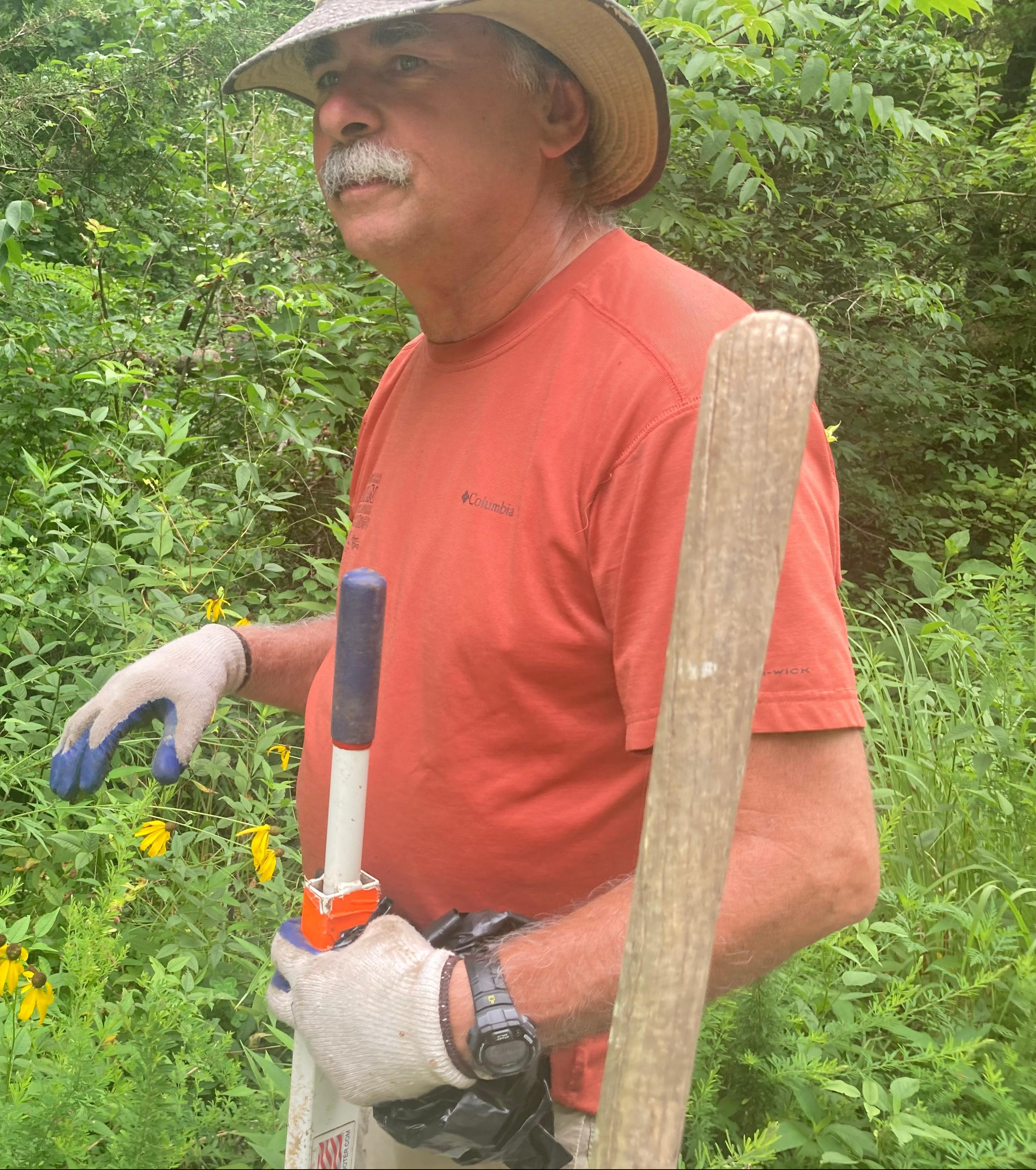Volunteers, including ones from the local environmental group Tennessee Citizens for Wilderness Planning work to maintain it with Boy and Girl Scout troops also making contributions. Science projects have included bird nesting boxes and restoration of the cedar barrens habitat.“It’s nice to preserve the history, but it’s also nice to see the plants are here and the plants were here before the people were here,” Ann Hewitt Worthington, whose in-laws lie buried in the cemetery said in an interview. She described the cemetery as “accessible to anyone who enjoys being here.”
It’s 26 acres, and 125 bird species live there, according to TVA. The trails, built by a local Boy Scout troop, form a 0.75 mile loop.
Worthington said she likes the additional features near the cemetery that have come with the TVA designation.
“I love the wildlife viewing platform. I saw otters there about a month ago when I was here with my cousin. It was so cool,” she said.
The cemetery’s history stretches back before TVA, TCWP or even Tennessee existed. Worthington has written and lectured about the site’s history.
Samuel Worthington bought the land for his farm in October 1795, the year before Tennessee became a state. His family made a cemetery on the land, which was common at the time. Many graves are marked, but there are more that are not.
Whether Samuel Worthington lies in the cemetery is unclear. Most of the interred are relatives by blood or marriage to Samuel and his wife Elizabeth. A small section contains African Americans who worked for the family. Ann said she did not know whether that group included enslaved people, which she said the family did own, as well as free laborers. She said she was interested in more study of that section and was “honest” about her in-laws slaveholding past.
 Headstones at Worthington Cemetery. Ben Pounds/Hellbender Press
Headstones at Worthington Cemetery. Ben Pounds/Hellbender Press
The federal government later in 1942 bought the land in order to create the Oak Ridge community of workers who would enrich uranium for atomic bombs. Elza Gate, near present-day Elza Gate Park served as a security checkpoint. TVA in turn bought that land in 1959 when it created nearby Melton Hill Lake.
Ann Worthington described the road to the cemetery, now part of the trail system, as once a place people dumped litter.
“It was easy access,” Jimmy Groton, a member of TCWP’s board of directors said of that road. “If people had tires or shingles, they just came here and dumped them.”
But TCWP wrote to TVA in 1992, requesting the area become a natural area and a study area requesting the area become a natural area and a study area for local schools, followed by a similar request from the city of Oak Ridge. Students from these local schools helped clean up the litter. The official Ecological Study Area designation from TVA came in 1993.
Nowadays TCWP and volunteers’ work in the area involves getting rid of invasive plants that are native to other places so that native East Tennessee ones have more space to grow. Groton calls this work “prairie restoration.”
“There’s a lot of satisfaction in jerking them up out of the ground and hanging them in trees so that they don’t resprout,” Groton said of these invasives.
While cemeteries are somewhat disturbed land, they’re also great spots for nature preservation and study. A 2019 article in the journal “Global Ecology and Conservation” put together conservation and ecology studies at cemeteries around the globe. It described cemeteries as “’islands’ of natural vegetation in close proximity of urban areas, often harbouring rare and endangered plant species. The key importance of cemeteries in nature conservation is therefore nowadays unquestionable.”
Groton expressed similar thoughts.
“One thing that’s cool about old cemeteries like this, and I learned this a long time ago from the Nature Conservancy staff is that cemeteries, especially the old ones, have been around for a long time. And most of the time the vegetation in those old cemeteries is remnants of what has been there for hundreds of years,” Groton said. He said the Nature Conservancy has used old cemeteries in the Midwest to collect seeds for restoration of prairie habitats.
“And voila, you’ve turned something that was just a creepy lawn into something magic.”
